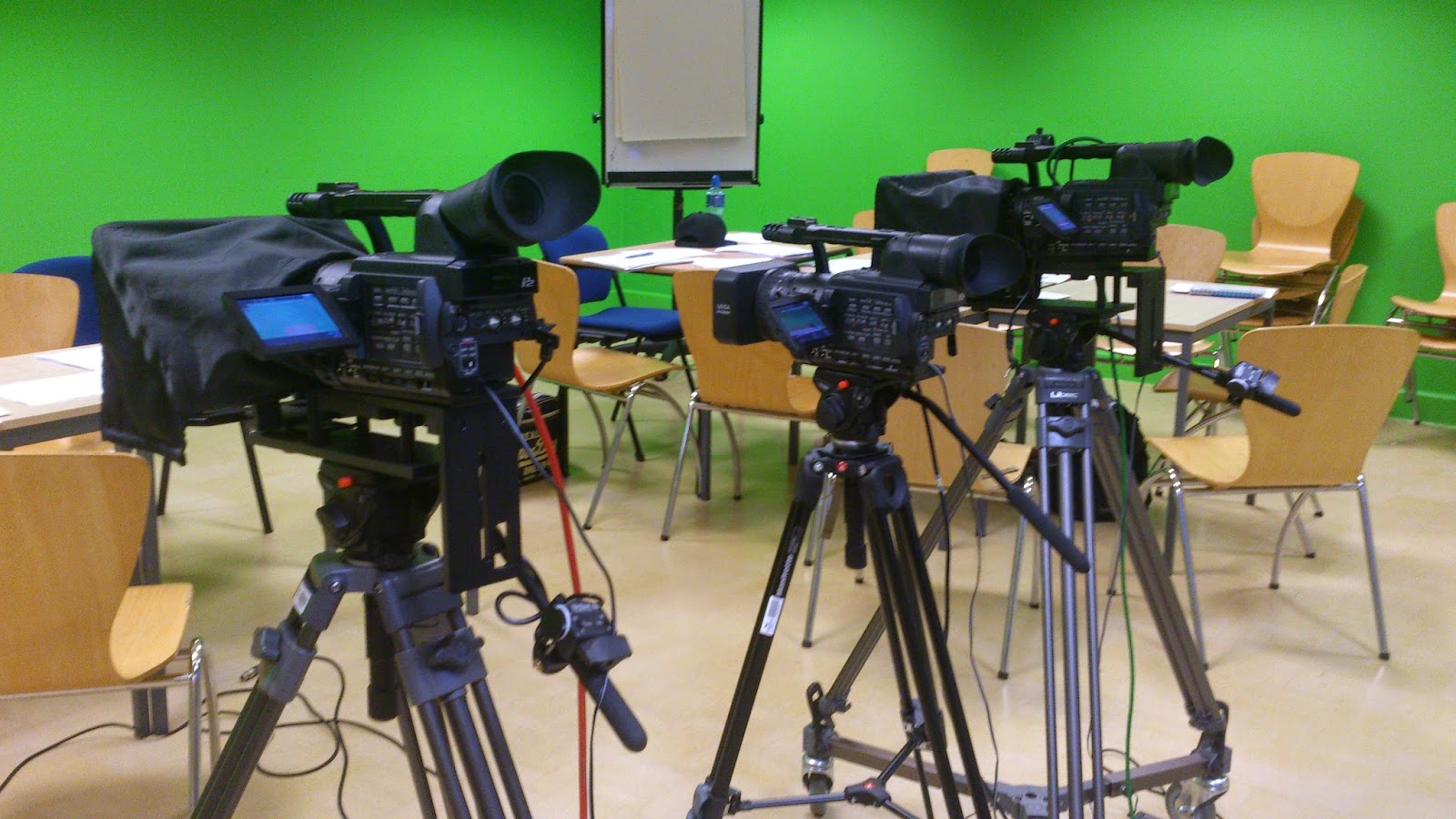Firstly the teacher handed out copies of news stories and we read through them as a class. We then broke up into smaller groups and began putting the stories in order the we thought they should be read. Afterwards we came back together as a class and cut down the stories, removing any superfluous information to decrease runtime. We then practised reading through the stories before taking it in turns to record them.
When it was our group's turn the two
presenters sat at the desk in front of the cameras had their mics attached to their clothing and did a soundtrack. The vision mixer set up the titles, pictures and background as well as checking eye levels, focus, white balance and framing. When the crew were ready the floor manager asked the audience for quiet and did a countdown before the recording began. The presenters read the stories whilst the cameras recorded them and the vision mixer chose between the three different cameras and added pictures.
 I thought we worked efficiently as a team, making good use of the time we were given. If I were to improve things I would have edited the stories during the first read through and perhaps sent only one person to source an additional story instead of the whole group. I also would have used a teleprompter as it was difficult to read and look up at the camera and given the presenters and crew earpieces to enable easier communication.
I thought we worked efficiently as a team, making good use of the time we were given. If I were to improve things I would have edited the stories during the first read through and perhaps sent only one person to source an additional story instead of the whole group. I also would have used a teleprompter as it was difficult to read and look up at the camera and given the presenters and crew earpieces to enable easier communication.






